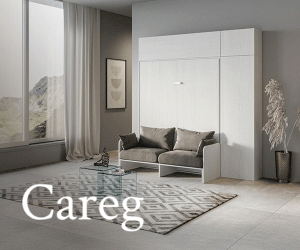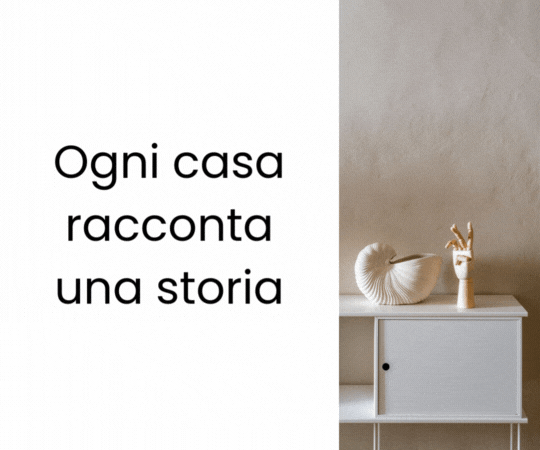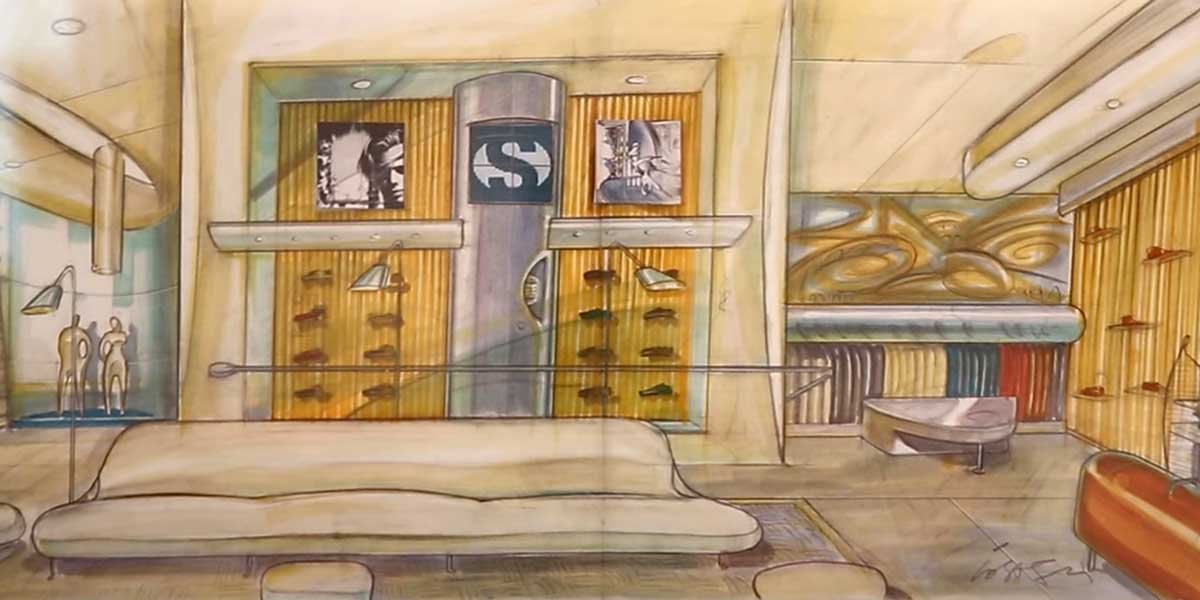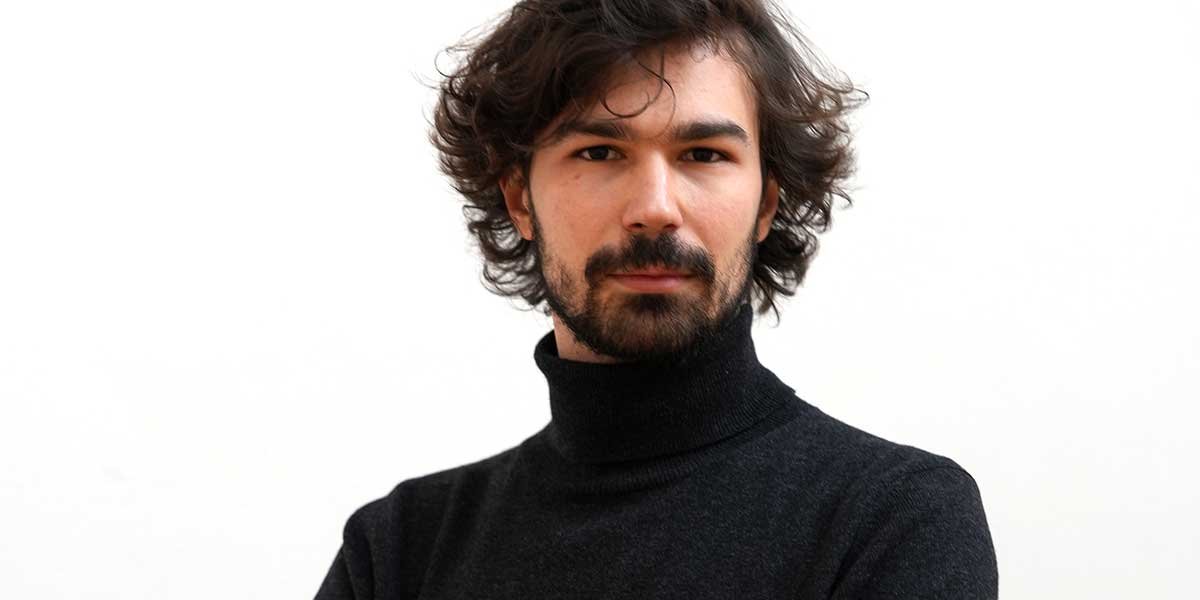On 15 December 1870, Josef Hoffmann was born, a famous architect who was among the founders of the Viennese Secession (1897) and a few years later of the Wiener Werkstätte, an association of artists who proposed unity between the various types of arts and who had great fame for thirty years. Founded in 1903, the declared objective was to introduce objects of high aesthetic and artistic value into everyday life. The success of the Werkstätte was based on the rejection of mechanical production in favor of artistic craftsmanship and manual skill: whoever designed a piece of furniture or an object had to follow its manufacturing.
Parallel to his activity as an architect, Josef Hoffmann was also a designer, making a contribution to the history of design with his works. His projects are characterized by the simplicity of the shapes and the geometric abstraction of the decorations, where the typical squares influenced by the work of Charles Rennie Mackintosh prevail.
Among the most famous furnishings is the “Sitzmachine” (literally “sitting machine”) designed in 1905, an armchair in curved and painted laminated wood with an adjustable backrest that reclines by moving the position of a stop between a series of functional and decorative spheres. The important shapes of the sides and backrest contrast with the thin curved line of the armrests, making the whole balanced and refined in proportions.
Sitzmachine, 1905, original design
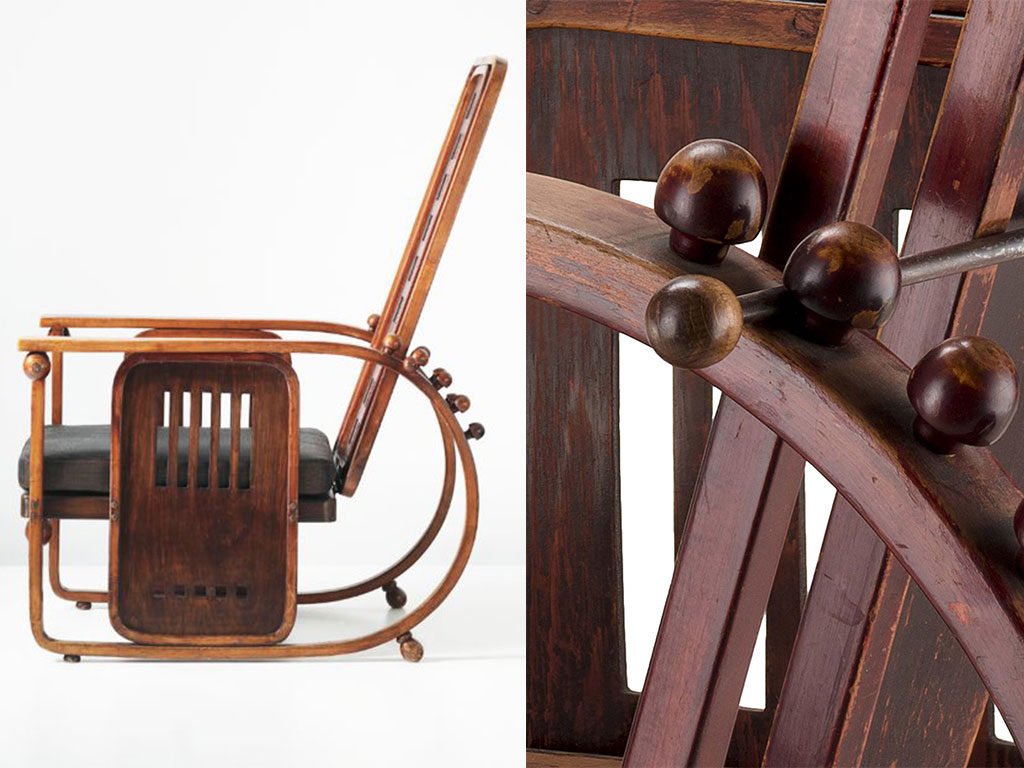
Sitzmachine, today produced by the Wittmann company

Hoffman’s passion for geometric shapes finds expression in various decorative patterns, such as those of the “Serie b” collection of bottles and glasses. Made in 1910 for the Viennese glass manufacturing company J&L Lobmeyr, it is still in production after more than 100 years. The modern lines of the blown crystal, the essentiality of the shapes and the decorations characterized by the use of black and white make this collection a perfect synthesis of all the stylistic features of Hoffmann and the Wiener Werkstätte movement.
Series B, 1908

Produced and marketed since 1908 by Jacob & Josef Kohn, the “N.371 series” expresses in design and construction a simplicity and lack of decorations atypical of the time and not recognizable in other models for several subsequent decades. The various pieces that make up the collection are more easily recognized with the term “sevenballs” due to the particularity of the backrest, composed of a “spine” of 7 small spheres that join the two curved wooden profiles that form the backrest and the rear legs.
Serie n. 371, drawings from the collection, 1908

Series no. 371, sofa and chair, 1908.

Over the years, Hoffman’s projects have been re-edited respecting the original design, such as the cutlery set “Rundes Modell” designed in 1906 and re-proposed by Alessi in 2000 and subsequently in 2015, reduced in number of pieces compared to the original one: fork , knife, table spoon and coffee spoons. Functionality, comfort and formal elegance in a set of cutlery that marked the design of the 20th century, so much so that it became a source of inspiration for many designers who dealt with this design theme.
Original Rundes Modell, 1906

Rundes Modell, Alessi re-edition, 2015

The “Kubus” sofa and armchair were also reissued by the historic Austrian company Wittman based on the designer’s drawnings. As the name suggests, they are composed of a repetition of cubes and perfectly reflect the designer’s passion for square shapes applied to design. Timeless models that find their place in any room of the house and offer perfect comfort thanks to the voluminous structure and leather covering.
Kubus sofa, 1910, now produced by the Wittman company
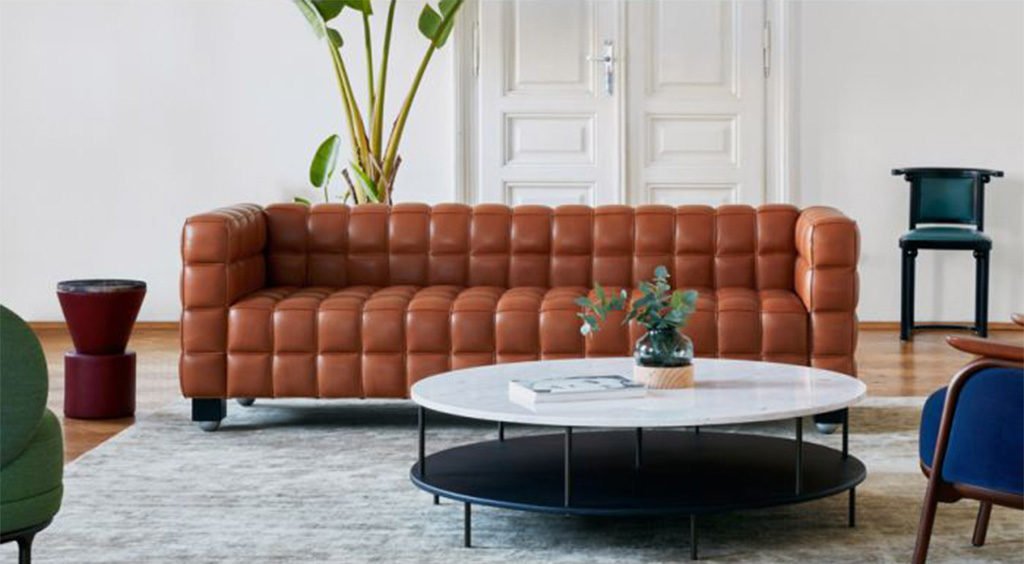
Kubus armchair, 1910, now produced by the Wittman company

In the cover image, portrait of Josef Hoffmann
All the images of series n.371 were taken from woodcurvatodesign.it






